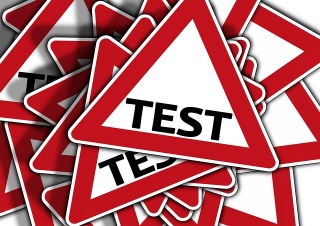Planning and managing organisations/PMAN103/Planning and strategy/Quiz
From WikiEducator
Jump to: navigation, search
The questions published at the end of each learning pathway are re-used for the knowledge test for learners interested in earning a digital badge or certificate of participation for the Planning and Managing Organisations (PMAN103) micro-course. Please consult the Certify participation page for more information.
True - false questions
Indicate whether the following statements are true or false:
- Once the internal analyses of an organization using PESTLE are complete, the results can be inputted into a SWOT analysis.
- True
- Correct.
- False
- No. This approach facilitates the creation of “mini strategies” that address the problem(s) in question.
- True
- Although the “classical” approach to formulating strategies, ie. Predict/Plan/Shape, is still relevant in some cases, many organizations may now require a more “experimental” approach to navigate a turbulent environment.
- True
- Correct.
- False
- No. Strategy still needs to match the situation, but in a turbulent environment it is difficult if not impossible to predict, plan for and/or shape the working conditions.
- True
- Planning process is synonymous with strategic management process as they both focus on what the organization is doing to achieve its mission and vision.
- True
- No. While the planning process formulates a direction for an organization, the strategic management process is concerned with what the organization will do and won’t do so that this direction can be achieved.
- False
- Correct.
- True
- A successful strategy formulation exercise would answer questions about “what” the strategy should be and “how” to implement that strategy.
- True
- No. The strategy formulation exercise only identifies “what” the strategy should be while the “how” question is answered in a separate strategy implementation exercise.
- False
- Correct
- True
Multiple choice questions
- What is the usual time frame for a strategic management process which involves analyzing competitive opportunities and threats as well as the strengths and weaknesses of an organization? (Select one answer)
- Less than one year
- Incorrect. This is a long-term process.
- One to two years
- Incorrect. This is a long-term process.
- Two to three years
- Incorrect. This is a long-term process.
- Three or more years
- Yes.
- Less than one year
- Which ONE of the POLC functions of management involves developing a corporate structure and allocating human resources to ensure the accomplishment of objectives? (Select one answer)
- Planning
- Incorrect. This is not the POLC function.
- Organizing
- Yes.
- Leading
- Incorrect. This is not the POLC function.
- Controlling
- Incorrect. This is not the POLC function.
- Planning
- Which THREE of the following are major diversification strategies outlined in the PMAN103 readings? (Select all that apply – there are three correct answers)
- Concentric diversification
- Yes. The new business produces products that are technically similar to the company’s current product but that appeal to a new consumer group.
- Horizontal Diversification
- Yes. The new business produces products that are totally unrelated to the company’s current product but that appeal to the same consumer group.
- Vertical diversification
- Incorrect. This is not a diversification strategy.
- Conglomerate diversification
- Yes. The new business produces products that are totally unrelated to the company’s current product and that appeal to an entirely new consumer group.
- Concentric diversification
- Which THREE of the following are major diversification strategies outlined in the PMAN103 readings? (Select all that apply – there are three correct answers)
- Value chain
- Yes. The value chain requires taking an organization apart and identifying the important constituent parts.
- VRIO
- Yes. The VRIO framework suggests that a capability, or a resource, such as a patent or great location, is likely to yield a competitive advantage to an organization when it can be shown that it is valuable, rare, difficult to imitate, and supported by an organization.
- PESTEL
- Yes. The PESTEL framework involves collecting information about, and analyzing, each environmental dimension to identify the broad range of threats and opportunities facing an organization.
- Financial chain
- Incorrect. The financial chain is not a tool discussed in the PMAN103 materials.
- Value chain
